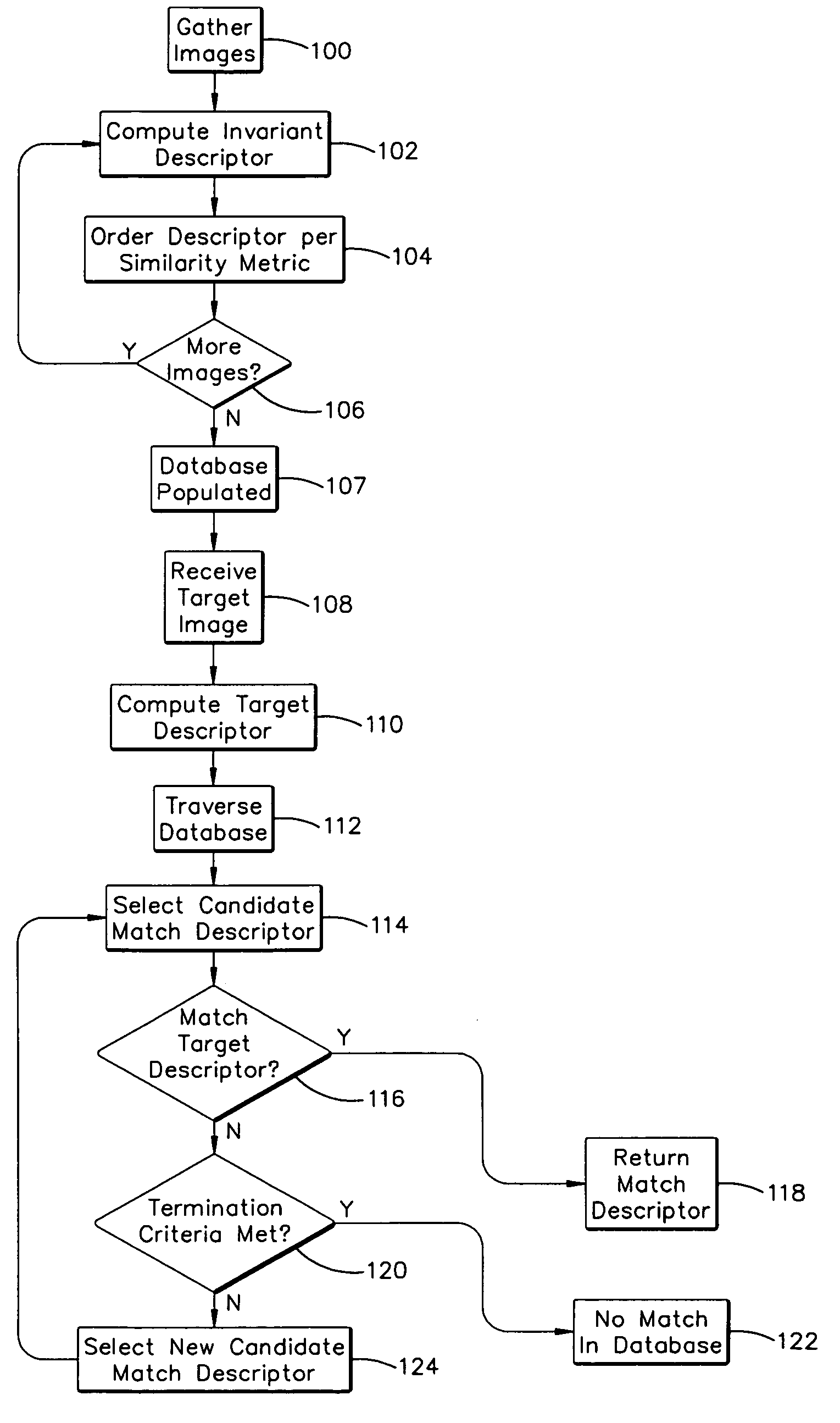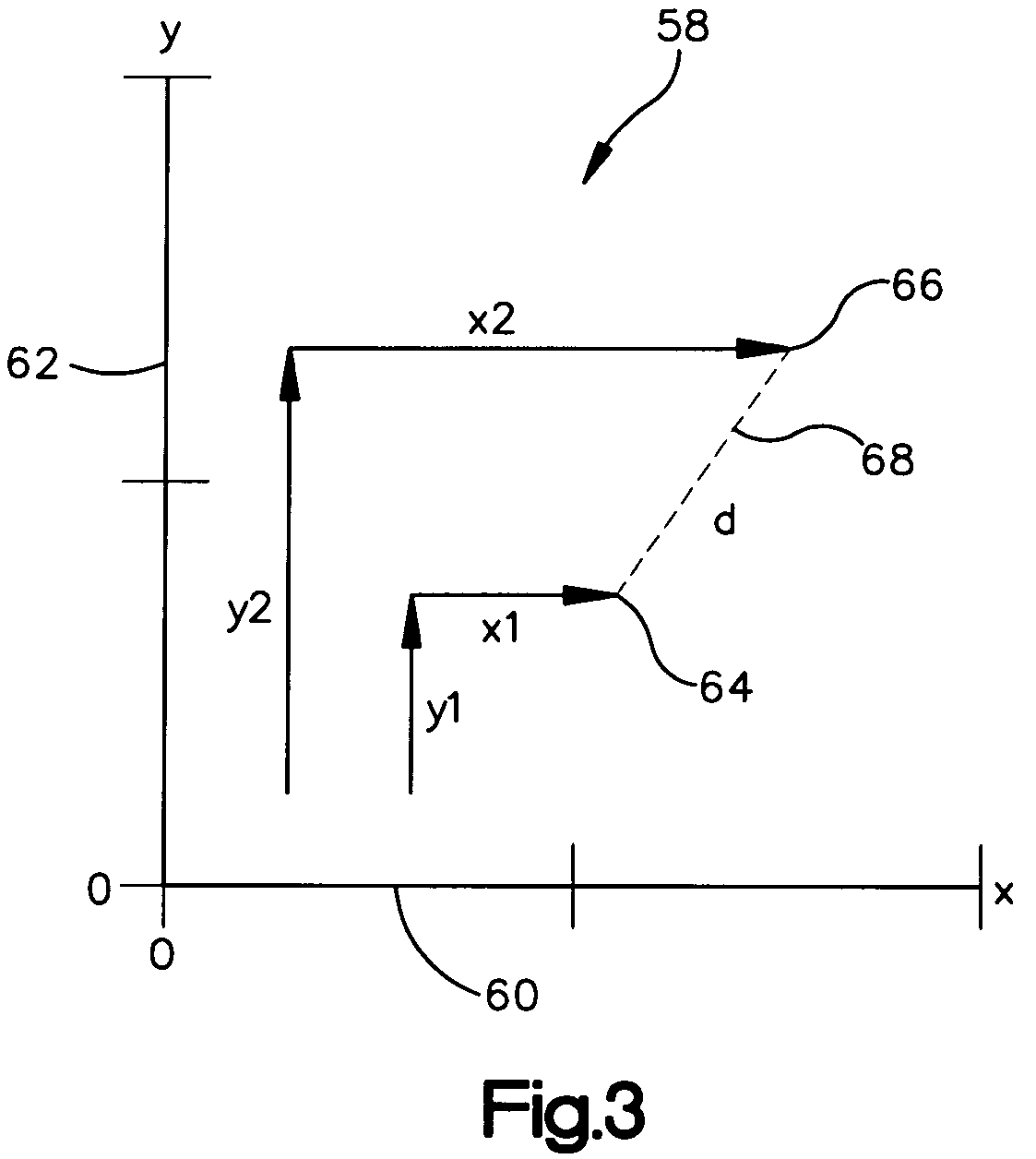System and method for efficiently finding near-similar images in massive databases
a database and database technology, applied in the field of system and method for efficiently finding near-similar images in massive databases, can solve the problems of time and computationally intensive search and finding multimedia images, excessive “brute force” search methodology, and slow process for large data sets
- Summary
- Abstract
- Description
- Claims
- Application Information
AI Technical Summary
Benefits of technology
Problems solved by technology
Method used
Image
Examples
Embodiment Construction
[0018]A description of preferred embodiments of the invention follows.
[0019]The image storage and retrieval system of the present invention system employs two phases. A population phase stores image data in a database according to a similarity metric. The similarity metric ensures that similar images are stored near other similar images in the multidimensional space defined by the database. Storing images near other images limits search traversals to a fraction of the database because the image sought is organized near similar images. A retrieval phase traverses the database and compares a target image to the stored images. The images are compared according to a similarity metric, which defines distance in the multidimensional space. Images which are sufficiently near the target images are deemed to be a match. By organizing the database according to the similarity metric, the search commences on images near the matching image, and successive match attempts will occur on near images...
PUM
 Login to View More
Login to View More Abstract
Description
Claims
Application Information
 Login to View More
Login to View More - R&D
- Intellectual Property
- Life Sciences
- Materials
- Tech Scout
- Unparalleled Data Quality
- Higher Quality Content
- 60% Fewer Hallucinations
Browse by: Latest US Patents, China's latest patents, Technical Efficacy Thesaurus, Application Domain, Technology Topic, Popular Technical Reports.
© 2025 PatSnap. All rights reserved.Legal|Privacy policy|Modern Slavery Act Transparency Statement|Sitemap|About US| Contact US: help@patsnap.com



